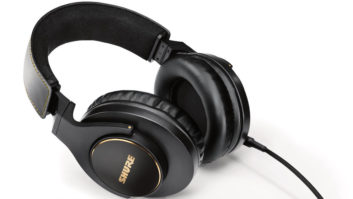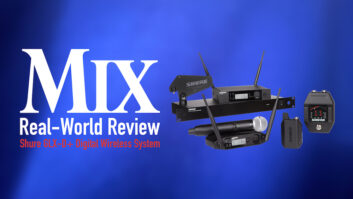
The Shure Beta 91 is one of those rare mics that seems to defy expectations at every turn. Born out of live touring engineers repurposing the tabletop boundary mic SM91 as an inside kick mic, the Beta 91’s popularity and user base spread from live stages to studios—not the other way around, as typically happens. That thin proprietary cable with mini XLR TA3F and TA4F female connectors that looked like it was sure to fail after a few uses actually held up admirably well over time. And at the most basic level, who would think you could get such solid, extended bottom end out of a miniature diaphragm in a boundary mic?
I owned a pair of Beta 91s (you’ve got to have two if you expect to record double-kick heavy metal properly) but the output jack failed on one of them, so I sent it in to Shure for repair. With the Beta 91 discontinued and replaced by the Beta 91A, they offered to replace my mic for flat fee of $120—half the cost of a new $239 91A. I took them up on their offer.
When I received my new mic, I saw that Shure had updated the color to match the rest of the silver-grey Beta line. (They’re also available in black.) But the mini XLR connector for output and the in-line XLR-barrel preamp? Both are gone and replaced by a standard XLR jack. No more special cable required!
I set out to compare the 91A’s performance to my remaining, thumpy, early-model Beta 91, tracking a singular drum performance at 44.1 kHz. To do this, I miked my 22-inch Mapex maple kick drum with both the 91 and 91A mounted on a Remo kick-dampening pillow, amplified with a pair of Cranborne Camden 500 mic preamps (known for their linearity, reference response and unit-to-unit consistency) without any signal processing.
The 91A had a hotter output, requiring about 10 dB less amp gain than the 91. Even though the mics sounded much more similar than different (similar dynamics, punch, noise floor; yes, they’re a bit noisy, as is typical for smaller diaphragms), there were pretty obvious differences in frequency response. The old 91 had a little more bump down low, with a usefully defined beater-click high-end attack, whereas the 91A was a little tighter in the low end, with a more pronounced and a more balanced high-end beater snap.
Solid State Logic Fusion – A Real World Review
Austrian Audio Hi-X50 and Hi-X55 Headphones – A Real-World Review
Apple Mac Pro Rack: A Real-World Review
The 91A has a small response curve switch on the bottom side (recessed and firm enough to avoid accidental switching) that attenuates 400 Hz by about -7 dB. Shure chose these parameters well, as they tend to mirror the way many engineers often EQ a 91. With this filter engaged, the 91A’s bottom-end response seemed fuller. Any boxiness was gone, and that click was prominent enough to satisfy the needs of any hard-rockin’ engineer—FOH, monitors, studio or otherwise.
If you’ve got any Beta 91s lying around in need of some TLC, allow me to recommend Shure’s replacement service. With judicious use of input gain and low-end shelving EQ, you can get any older 91s in your locker/case to match any new 91As you add to your collection. In the live music world, since the 91As have a cleaner and smoother top end and also that midrange contour switch, I believe you can get a bigger and bolder kick sound at FOH that will cut through a crowded rock/metal/extreme mix easier with less EQ.
In the studio, all of the 91A’s attributes hold up as well, and using a standard XLR cable takes very little getting used to. Try putting a Beta 91A inside the kick with flipped polarity and add your Beta 52 (or D112 or U47, etc.) to the outside on the resonant head and you’ll see why every drum recordist needs to add this affordable secret weapon to their kit.
Shure • www.shure.com







